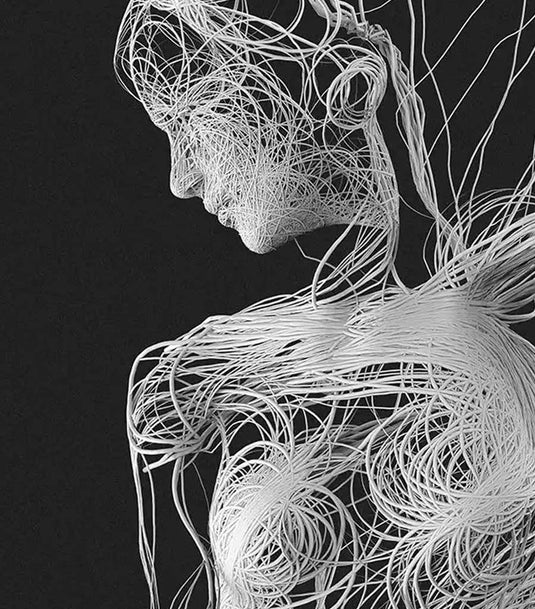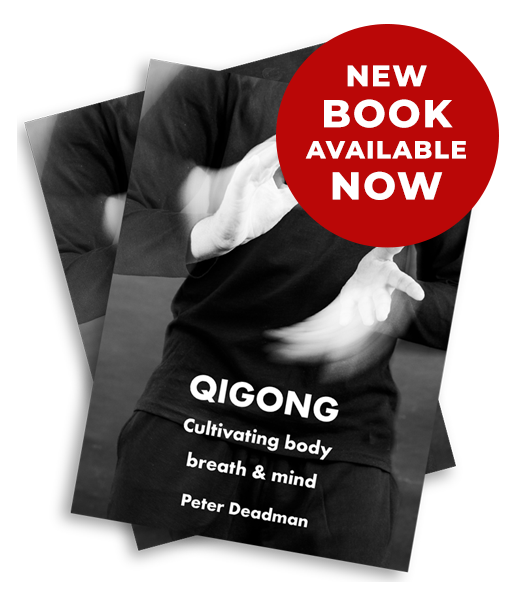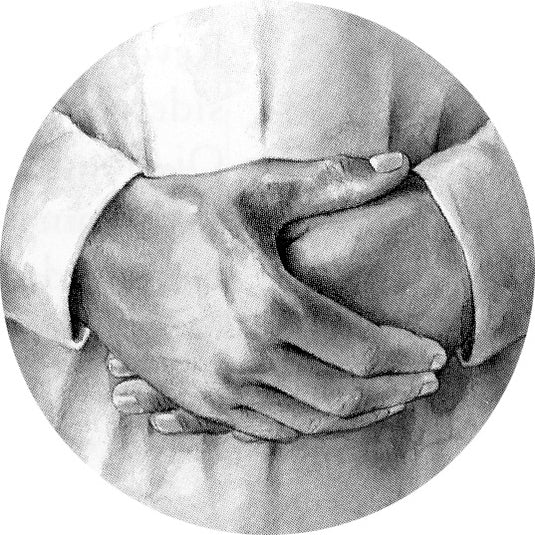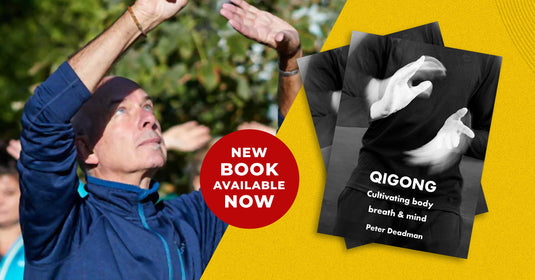“For all [to practice] this Way: You must coil, you must contract, You must uncoil, you must expand, You must be firm, you must be regular [in this practice] Nei-Yeh (Inward Training), China, 4th century BCE[1]
One of the key characteristics of the Chinese ‘internal’ mind-breath-bodywork tradition, is the practice of lengthening or uncoiling (yang) and settling back or coiling (yin). These movements are performed through the whole elastic body, slowly (in synchronicity with lower abdominal breathing), mindfully, with the minimum of muscular tension and not to our full stretched capacity. Indeed stretching feels like the wrong word since stretching to the limit starts to generate tension. Like many things this follows the Daoist idea of ‘stopping before completion’ (for example stopping eating before we are full or stopping exercise before we are exhausted). As the Daodejing says, “Better stop short than fill to the brim. Oversharpen the blade and the edge will soon blunt.” When teaching qigong, I find the images of the ‘elastic body’, an accordion expanding and closing, or soft waves washing onto and retreating from a sandy beach useful to convey the idea.
The fascia
“Fascia forms a continuous tensional network throughout the human body, covering and connecting every single organ, every muscle, and even every nerve or tiny muscle fiber.”
Fascia: The Tensional Network of the Human Body, 2012[2]
Until the latter part of the twentieth century, anatomists tended to consider the animal body in terms of a machine, made up of individual parts that performed specific functions. Nowhere was this more evident than in its perception of body movement, where individual muscles – alone or in combination – were seen to move individual bones and joints. In athletes and body builders, muscular training increasingly sought to isolate these muscles and find ways – using tailored techniques and machines – to train and strengthen them.
In anatomical studies, it was taken for granted that in order to isolate the really important structures – muscles, organs, nerves, blood vessels, bones etc. it was necessary to cut through and push to the side the webby layers of elastic connective tissue that surround every one of these, and indeed permeate every part of the body.
Yet in an astonishing turnaround, this largely ignored, discarded material – the soft fibrous connective tissue within the body that goes under the broad title of the fascia – has become one of the most studied anatomical and physiological phenomena of living bodies.
Fascia has been defined as the ‘biological fabric that holds us together’[3]. It enables the body to respond as a ‘tensegrity structure’ (when one part moves, every other part moves in response), to maintain alignment, balance and structure. This underpins the growing realisation that the kind of exercise which best maintains the health of the fascia is one which moves the body as an integrated whole.
When we are young, the fascial tissues show clear folds or undulations which have been compared to elastic springs (or an accordion). This elasticity – which is unrelated to simple muscle strength – gives young humans and young animals springiness and bounce (think of a gazelle’s astonishing leaps on the most delicate and fragile looking legs). As we age, the fascia lose this springiness and the undulations flatten. And when we sit for long periods, or distort our physical alignment and structure through poor posture, repetitive work or leisure activities, patterns are imprinted on the fascia. They no longer glide against each other but form adhesions and become matted, firm and overly dense. This is like the transition from bouncy new wool to thick and tough felt. The consequence is pain, impaired movement, stiffness and poor health. It could therefore be said that as far as movement is concerned, our bodies are as young as our fascia[4].
The good news is that – like muscles – the condition of the fascia can be improved by movement. But the kind of movement that maintains the flexibility of fascia is of a particular type. Pumping iron or cycling will have relatively little effect, and while aerobic exercise will influence the fascia more, the best exercises incorporate fluid, slow, dynamic movements, rhythmically coiling and uncoiling the connective tissue, using a wide variety of movements (rather than one-dimensional ones such as on a rowing machine), spiralling and twisting inwards and outwards, upwards and downwards through the whole body. The aim is a strong, flexible, youthful body that is less likely to be injured when we play sports, lift and carry, and perform normal daily activities and work[5].
Regularly practising these ways of moving can re-programme the fascia but it is not a fast process and can take up to twenty-four months[6]. This might explain the relatively low take-up of qigong and the internal martial arts in Western countries. It takes time to experience the rich rewards of these traditions – at least compared to the rapid and more immediate payoff of strength training, aerobic training and other forms of exercise, including yoga.
The acupuncture perspective
” … there is no part of the body, no kind of tissue, no single cell, that is not supplied by the channels [meridians] … The channels penetrate the zangfu and the extraordinary fu [i.e. the organs] in the deepest levels of the body and connect with the skin, muscles, flesh, tendons, and bones, the head, body and limbs, and the sense organs, linking all the tissues and structures of the body into an integrated whole.”
A Manual of Acupuncture, 1998[7]
When prospective acupuncturists begin their studies, they can be overwhelmed with the task of learning the pathways of the many different channels and the hundreds of acupuncture points that lie along them. In this endeavour, however, we risk losing the forest for the trees and forget the entire, complex web of primary, connecting, extraordinary and minute channels and vessels. The image of the body as an elastic web of fascial tissue can be very helpful in understanding the otherwise strange practice of attuning to yinyang by softly lengthening and contracting through the whole body – sometimes for hours on end. But for acupuncturists (for whom invigorating the channels is their daily bread and butter) the image of activating the entire channel/vessel network in the body through mindful movement can be even more profound.
[1] (trans. Harold D. Roth).
[2] Schleip R et al. (Editors), (2012). Fascia: The Tensional Network of the Human Body. The Science and Clinical Applications in Manual and Movement Therapy. Churchill Livingstone, Edinburgh.
[3] ‘Fascia & Tensegrity’, Anatomy Trains. Available: http://www.anatomytrains.com/fascia/
[4] Barros EM et al. (2002). “Aging of the elastic and collagen fibers in the human cervical interspinous ligaments”, The Spine Journal, vol 2(1), pp57-62.
[5] Schleip R and Müller DG (2012). “Training principles for fascial connective tissues: Scientific foundation and suggested practical applications”, Journal of Bodywork & Movement Therapies, vol 17(1), pp1-13.
[6] Schleip R and Müller DG (2012). “Training principles for fascial connective tissues: Scientific foundation and suggested practical applications”, Journal of Bodywork & Movement Therapies, vol 17(1), pp1-13.
[7] Deadman, P, Al-Khafaji, M and Baker, K (2011). A Manual of Acupuncture. Journal of Chinese Medicine Publications, Hove, p11.





